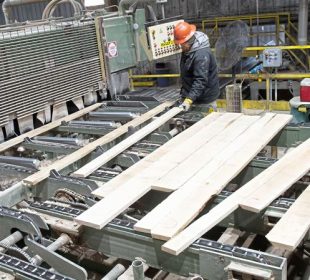Pre-tax profits in Canada's wood manufacturing industry are expected to grow from $1.1 billion in 2015 to just under $1.5 billion this year thanks to strong demand from the U.S.
HIGHLIGHTS
- Pre-tax profits in Canada's wood products industry are projected to reach close to $1.5 billion in 2016, up from $1.1 billion in 2015.
- Strength in the U.S. housing market and the weaker Canadian dollar will continue to drive exports of Canadian wood products.
- Lack of investment in plants and equipment could limit the industry's ability to take advantage of rising U.S. demand for wood products.
According to The Conference Board of Canada's Wood Products Industry Outlook, in 2015, the U.S. housing starts posted double digit growth, climbing to 1.1 million units, the highest level since 2007. By 2020, U.S. housing starts are forecast to reach 1.9 million units. Given Canada is the largest supplier of wood products to the United States, accounting for just under half of all wood products imports in 2015, the strength in the U.S. housing market will continue to be a key driver of Canadian wood products exports. Industry exports are forecast to grow to $15.5 billion this year, a level not seen since 2006.
Minor improvements in domestic demand and solid export growth will support stronger industry revenues. Revenues are forecast to grow by an average 7.2 per cent over the next two years. While industry costs are expected to increase due to rising production, they will do so at a slower pace than revenues, leading to an overall increase in profitability. By 2020, industry pre-tax profits are expected to be at their highest level in more than a decade.
However, a number of risks cloud the industry's outlook. Industry investment has yet to pick up substantially despite the industry operating at close to full capacity and could limit the industry's ability to take advantage of rising U.S. demand for wood products. In addition, looming timber supply shortages, particularly in B.C. and Quebec, as well as uncertainty regarding the future of the softwood lumber agreement have weighed on investment decisions and many opt to invest in U.S. sawmills instead.

















